In their daily work early career students and scientists are usually very busy with generating and interpreting data for their scientific projects. But it is equally important to discuss results and methods. While scientific conferences offer such opportunities in official settings, the annual Master, PhD and PostDoc Days at the Natural History Museum Oslo offer for a more informal exchange of ideas. This year, the event took place 14.-15. October at the Tøyen hovedgård (manor) in the Botanical Garden.
Most CEG members actively participated (the detailed programme can be found at https://www.nhm.uio.no/english/research/events/other-events/detailed-programme-msc-phd-and-postdoc-days-2024.pdf). They provided exciting presentations that may also be of interest for the public. It was a particular pleasure that two CEG members were awarded with best presentation prizes; Hilda Ansomaa Jakin Osei-Mireku for first year Master students and Pia Merete Eriksen for second year Master students. Very well done and Congratulations !!!
The organizers of the days had also arranged for excellent food during the breaks that were used for intense discussions of the presented projects. A big thank you to all that contributed to have The 2024 Master, PhD and PostDoc Days at the Natural History Museum Oslo.
Below follows a brief introduction to the talks presented by CEG early career scientists.
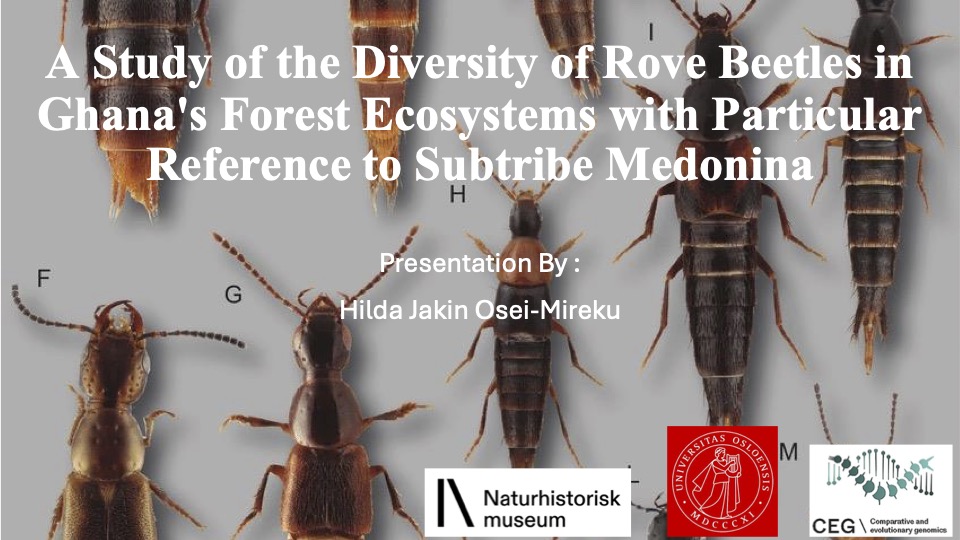
The talk of Hilda Ansomaa Jakin Osei-Mireku (1st year Master student) introduced into her research aiming to obtain an inventory of the Staphylinidae species occuring in three selected forest zones across Ghana. Using morphological and molecular approaches the study will focus on investigating regional differences and altitudinal impacts on beetle diversity. A molecular phylogeny analysis on the subtribe Medonina will enhance the understanding of their evolutionary relationships.
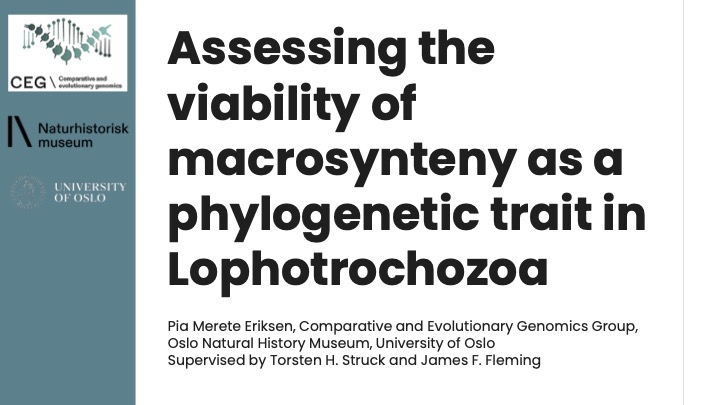
In her presentation, Pia M. Eriksen (2nd year Master student) broke down the contents of her Masters thesis with the overwhelming working title 'Evaluating the viability of macrosynteny as a phylogenetic trait in Lophotrochozoa', into its constituent parts. She carefully explained who the animals with the strange name Lophotrochozoa are - namely worms, molluscs, and their friends, and what she found on gene synteny (patterns of genes in the genomes) across species. Her exciting results were summarized in so-called ribbon diagrams.
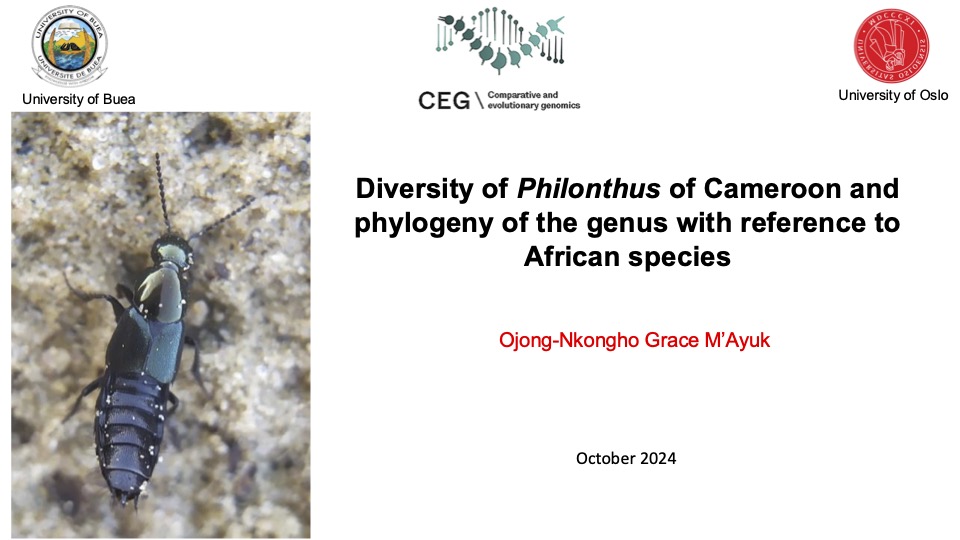
Grace M'ayuk Ojong-Nkongho is 2nd year Master student from University of Buea, Cameroon, and working on Philonthus Stephens , which is the largest genus within the subtribe Philonthina (Coleoptera: Staphylinidae). These beetles are predators typically found in decaying organic matter. Research on their diversity in Cameroon and their phylogeny has been limited. Therefore, this study aims to create an inventory of Philonthus species in Cameroon, to infer the phylogeny of the genus, and to describe new species.
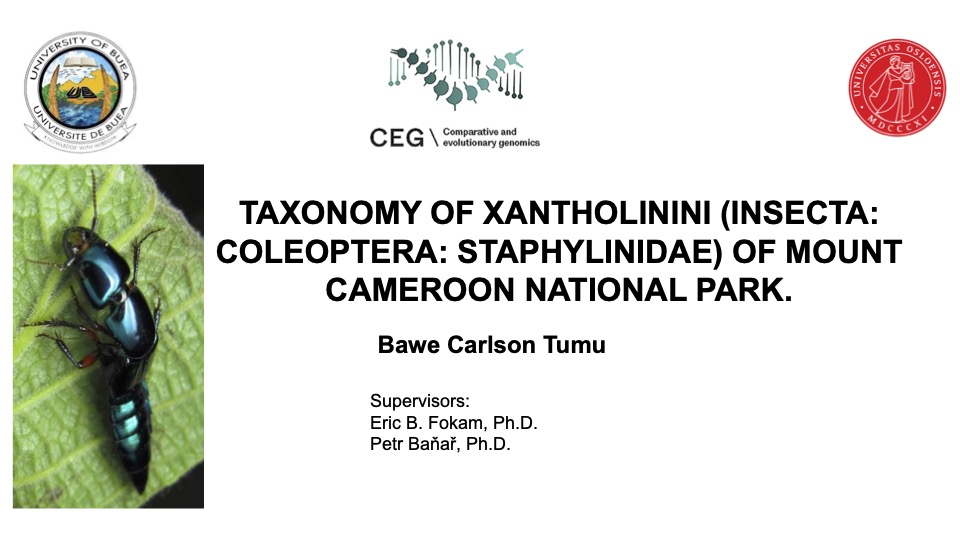
And there was more about staphylinid beetles. Bawe Carlson Tumu is also 2nd year Master student from University of Buea, Cameroon, reported about Xantholinini, a very interesting tribe of the beetle family Staphylinidae. These beetles are all characterized by short elytra. Many species belonging to 29 genera have been described in Africa south of Sahara. However, no study has been done on these beetles to document their taxonomy in Cameroon. Building on her experience in the field, she is confident that there are many un-described Xantholinini species to be discovered, and with the recent revision of Afrotropical Xantholinini by Bordoni in 2021 we will be able to identify and describe them.
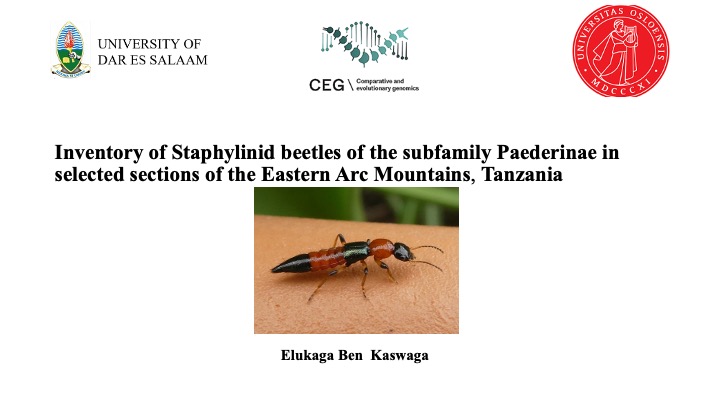
No doubt, staphylionid beetles dominated the day. Elukaga Ben Kaswaga is a 2nd year Master’s student at the University of Dar-es-Salaam, Tanzania, studying staphylinid beetles, more specifically species of the subfamily Paederinae. The aim is to conduct an inventory of these beetles in selected areas of the Eastern Arc Mountains in Tanzania in order to identify and describe new species previously unknown to science as well as to address their phylogeny and phylogeography.
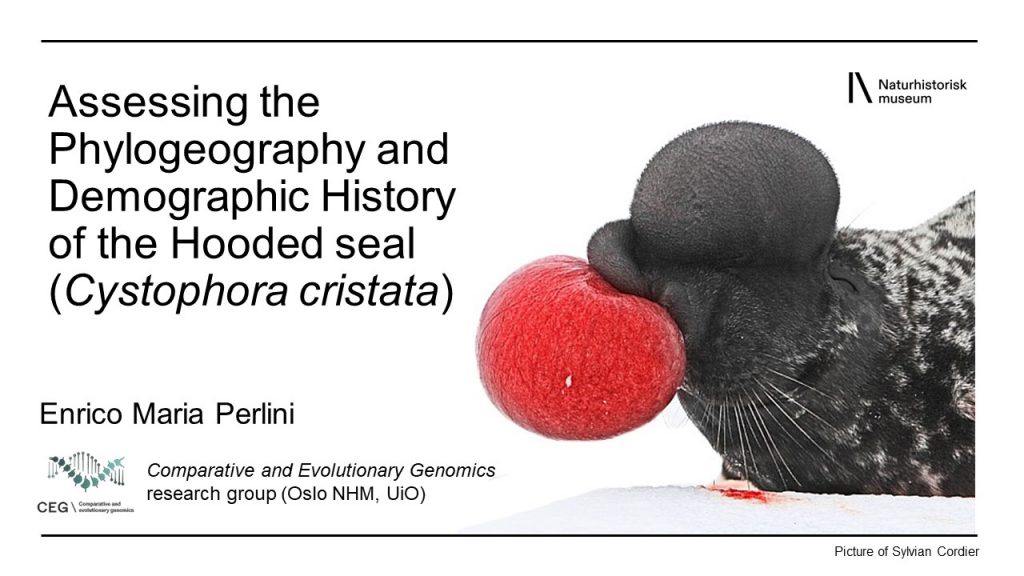
Enrico M. Perlini (PhD fellow) focussed on the hooded seal (Cystophora cristata Erxleben, 1777), an Arctic phocid species highly susceptible to the unprecedented environmental shifts brought by the ongoing human-caused climate change. Despite being of high conservation interest, the species is still highly understudied. Genomic analyses, involving the use of high-throughput sequencing technologies, are being implemented for obtaining a better understanding of the hooded seal`s phylogeography and demographic history.
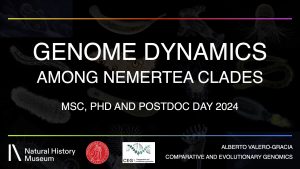
Alberto Valero-Gracia (PhD fellow) explained the last advances of his doctoral project. These progresses included the generation of five high-quality Nemertea (ribbon worms) genomes, together with its comparison among the different ribbon worm groups by means of macrosynteny (the order of genes and chromosomal elements). Some discussion about the homeotic gene architecture of these genomes was shared too. Alberto will be defending his PhD project soon.
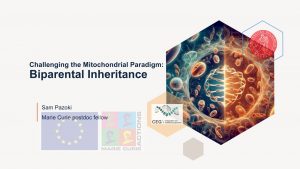
Samaneh Pazoki investigates heteroplasmy (presence of different mitochondria in a cell) in the invasive worm Hydroides elegans from a genomic perspective to understand its evolutionary significance. By analyzing mitochondrial DNA across populations, it aims to uncover genetic patterns that may drive the species' spread. Additionally, a distribution model will be developed to predict its range, supporting more targeted ecological management strategies.
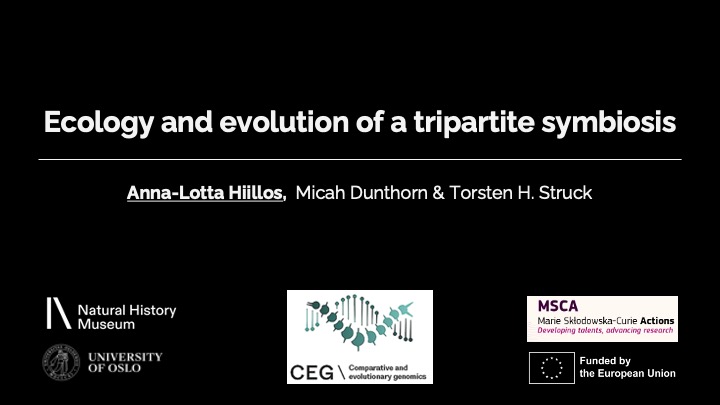
Anna-Lotta M. Hiillos (PostDoc) took us into the world of worms and their parasites. The overall goal of her PolyPro3 project seeks to understand the ecological and evolutionary consequences a symbiosis with three partners (tripartite) between polychaete worms and their protists symbionts has for marine seafloor (benthic) ecosystems. I am interested in the diversity and occurrence of this symbiosis around coastal sites of Skagerrak, as well as the nature of the interactions between the different organisms. Who benefits and who loses in this game?
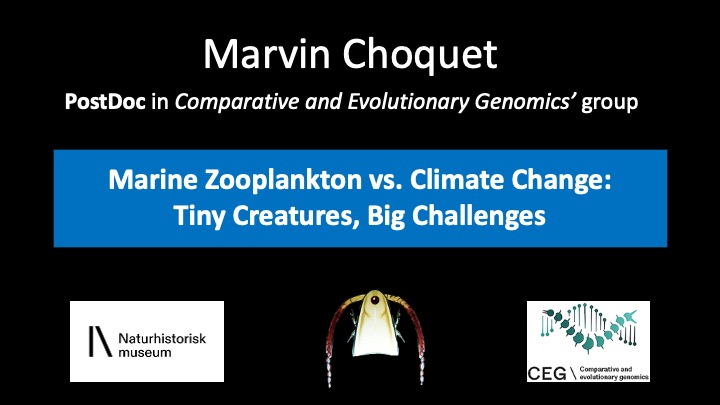
Marvin Choquet (PostDoc) pointed at the alarming declines in marine pelagic zooplankton populations. Despite numerous studies on their biology, the molecular mechanisms that could enable their adaptation to climate change remain largely unexplored in oceanic species due to technical challenges, limiting our ability to predict future impacts on marine ecosystems. Marvin introduced a ground-breaking proposal for external funding leveraging cutting-edge technologies to build a new foundation for understanding zooplankton adaptation and resilience.
![]()
